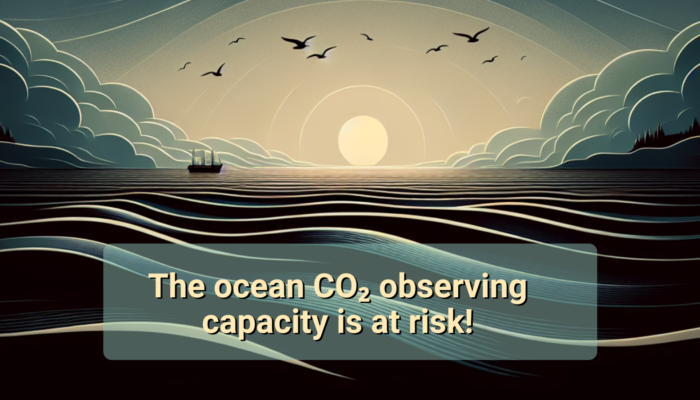
„observations not taken today are lost forever.“ (Wunsch et al., 2013)
The Critical Need for CO2 Measurements
Imagine the ocean as a giant lung, breathing in carbon dioxide (CO2) and helping to keep our planet cool. It absorbs about 25% of the CO2 emissions from human activities, playing a crucial role in mitigating the pace of climate change. But what happens when we lose sight of this process? Because this is precisely the reality we are beginning to face. Our ability to monitor and understand how the ocean absorbs CO2 is under threat. A troubling decline in CO2 measurements combined with a critical funding shortfall for the Surface Ocean CO2 Atlas (SOCAT)—a key resource for tracking the ocean’s CO2 role—means we are at risk of compromising our understanding of this crucial component of the climate system.
SOCAT: The Ocean’s CO2 Observation Treasure Chest
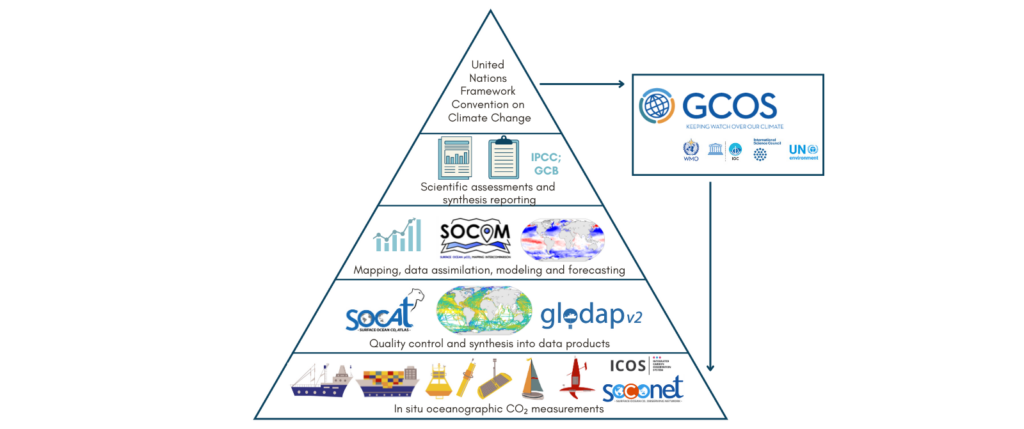
Figure 1: The value chain that connects oceanographic CO2 measurements to climate negotiations. (modified after Guidi et al., 2020)
Think of SOCAT as a treasure trove filled with invaluable data collected from every corner of the globe by ships, buoys, autonomous vehicles, and drifters (see Figure 1). Since 1957, scientists and dedicated volunteers have painstakingly assembled this collection, now boasting 38.6 million precise measurements of surface ocean fCO2 (fugacity of CO2). Each measurement, accurate to within 5 µatm, is a piece of a complex puzzle that reveals how our oceans absorb and store CO2. These observations are not just numbers—they are an important cornerstone to the WMO Global Greenhouse Gas Watch (G3W) initiative, are the lifeblood of the Global Carbon Budget, and play a critical role in shaping climate policies and reports by the Intergovernmental Panel on Climate Change (IPCC) (see Figure 1). SOCAT’s data help us understand the ocean’s role in our climate system and guide global efforts to tackle climate change.
Falling Behind: The Crisis of Declining Data Collection and Coverage
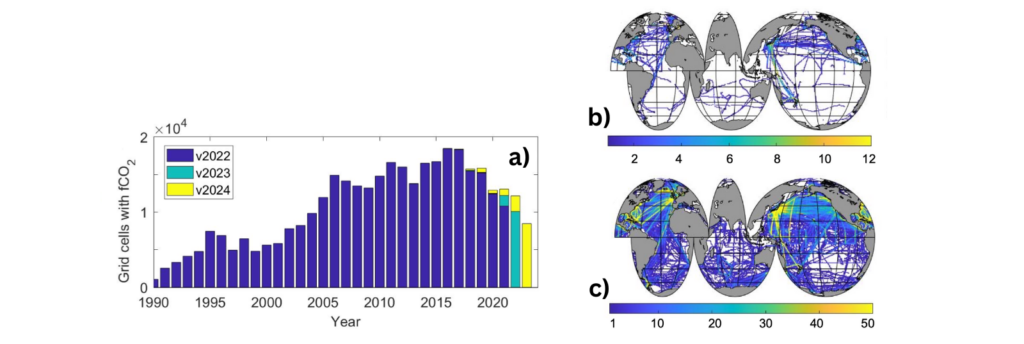
Figure 2: (a) Number of monthly, 1° x 1° grid cells with fCO2 for each year in SOCAT database version 2022 (v2022) to v2024, a measure for the open ocean CO2 observing effort. (b) The number of months with 1° x 1° gridded surface ocean fCO2 in 2022 and 2023 in v2024. (c) The number of individual months with 1° x 1° gridded surface ocean fCO2 between 1970 and 2023. (from: SOCATv2024 release poster)
The latest update, SOCATv2024, paints a grim picture of the state of our ocean CO2 monitoring efforts. It reveals a decline in data collection to levels reminiscent of a decade ago (see Figure 2a). Vast regions of the ocean remain under-monitored such as the Southern Ocean (see Figure 2b and 2c), leaving large patches of the ocean in the dark. Since 2017, we have seen this downward trend, compromising the accuracy of SOCAT-based estimates of the ocean CO2 sink but also significant gaps in data coverage, especially south of 20°N. The research by Dong et al. 2024 shows a 65% increase in the uncertainty of SOCAT-based ocean CO2 flux estimate attributed to the decline in data availability from 2017-2021, reducing the reliability of ocean CO2 uptake estimates in years and regions with sparse observations.
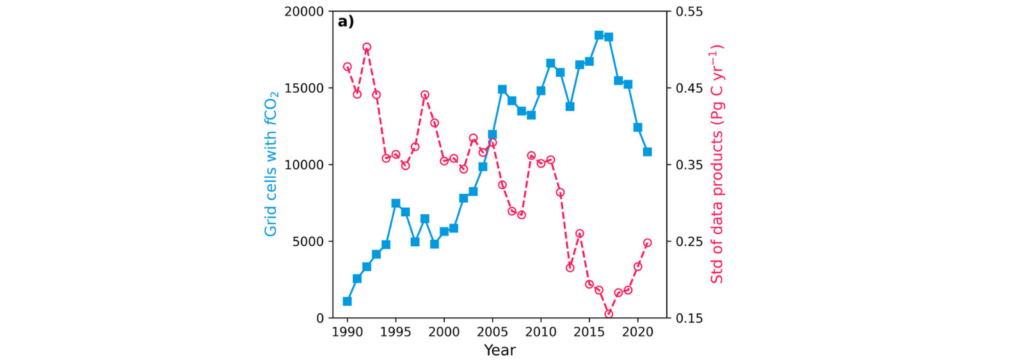
Figure 3: The number of monthly, 1° x 1° grid cells with fCO2 per year in SOCATv2022 and the standard deviation in ocean CO2 uptake from 7 SOCAT-based data products in the Global Carbon Budget 2022. (Dong et al., 2024; https://creativecommons.org/licenses/by/4.0/)
Addressing Funding Shortfalls
The challenges facing SOCAT extend beyond declining data collection. Persistent funding shortfalls threaten the integration, quality control, and accessibility of its data products. Currently dependent on a single regional hub, the future of the ocean CO2 observing system is at risk.
Urgent Call to Action: Securing SOCAT’s Future
Recognizing the gravity of the situation, over 100 concerned ocean experts and stakeholders have come together to issue the Ostend Declaration, underscoring the critical need for a robust, resilient, and sustainable surface ocean CO2 observing system. This declaration calls for concerted international and intergovernmental efforts to ensure the continuity and expansion of ocean carbon data collection, which is vital for informing national and intergovernmental policies on climate change and mitigation efforts (see Figure 1).
In light of this crisis, there is an appeal for emergency support to ensure SOCAT’s continued contribution to the Global Carbon Budgets over the next two years. There is an appeal for a sustainable funding model that can secure SOCAT’s future. Whether through national hubs, a subscription-based model, or a combination of both, the goal is clear: to establish a robust, resilient, and sustainable framework for ocean CO2 observations. The document titled “Case for SOCAT as an Integral Part of the Value Chain Advising UNFCCC on Ocean CO2 Uptake” elaborates on SOCAT’s critical role within the value chain of CO2 measurements, emphasizing its importance in advising the UNFCCC on ocean CO2 uptake (see Figure 1).
Embracing Innovation: Our Tools for Ocean Monitoring
To keep the ocean CO2 observational network and its synthesis alive, action is required. Innovative observational platforms such as Saildrones, profiling floats (e.g., the SOCCOM project), and sailing yachts offer unparalleled opportunities to collect data, especially in remote areas like the Southern Ocean. We must also continue our efforts in traditional shipboard observations, where ships-of-opportunity and research ships provide highly accurate data, acting as vital nodes in our global monitoring network.
Our oceans are the pulse of our planet, and CO2 observations are the heartbeat we must listen to. Don’t underestimate the danger of losing these crucial data points. As Wunsch et al. (2013) aptly cautioned, “observations not taken today are lost forever.”
References:
- SOCATv2024 release poster
- , , & (2024). Accuracy of ocean CO2 uptake estimates at a risk by a reduction in the data collection. Geophysical Research Letters, 51, e2024GL108502. https://doi.org/10.1029/2024GL108502
- Case for SOCAT as an integral part of the value chain advising UNFCCC on ocean CO2 uptake
- Declaration on Operationalising the Surface Ocean Carbon Value Chain
- Wunsch, C.; Schmitt, R. W., & Baker, D. J. (2013). Climate change as an intergenerational problem. Proceedings of the National Academy of Sciences, 110(12), 4435-4436. https://doi.org/10.1073/pnas.1302536110
- Guidi, L., Fernandez Guerra, A., Canchaya, C., Curry, E., Foglini, F., Irisson, J. O., Malde, K., Marshall, C. T., Obst, M., Ribeiro, R. P., Tjiputra, J., Heymans, S. JJ. (Ed.), Alexander, B. (Ed.), Muñiz Piniella, Á. (Ed.), Kellett, P. (Ed.), & Coopman, J. (Ed.) (2020). Big Data in Marine Science. (Future Science Brief 6 of the European Marine Board). European Marine Board. https://doi.org/10.5281/zenodo.3755793


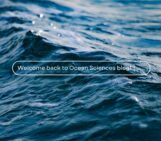


Knappertsbusch Michael
“Falling Behind: The Crisis of Declining Data Collection and Coverage”: Similar case: Just see the non-renewal of JOIFDES Resolution operations in IODP this year (2024) by U.S. NSF.
There seems a severe fall-back currently going on in interest in ocean science in general which is a big danger for mankind for securing planet earth processes’ understanding and securing a habitable world.
The JOIDES Resolution Science Operator (JRSO) is funded through a cooperative agreement with the US National Science Foundation (NSF), with international contributions from 23 Program member countries. The JOIDES Resolution ended operations in August 2024 following the non-renewal of NSF support.
see
https://www.nsf.gov/news/news_summ.jsp?cntn_id=306986&org=OCE